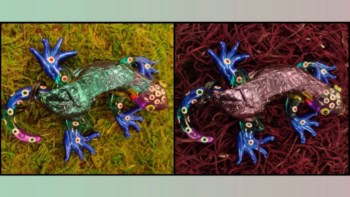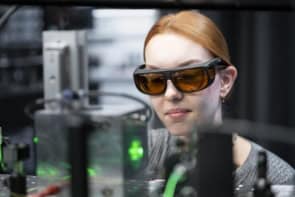Landmines could be cleared more quickly with a new technique based on nuclear magnetic resonance. Most landmine detectors search for buried metal, but these devices can be inefficient because they also detect rusty nails and shrapnel. The technique developed by Markus Nolte of the University of Darmstadt in Germany and colleagues could solve this problem by detecting the nitrogen in the explosive TNT, which is particularly hard to spot (M Nolte et al 2002 J. Phys. D: Appl. Phys. 35 939).

Manufacturers of landmines deliberately use little metal in their devices to make them hard to find with conventional detectors. Physicists originally tackled this problem with a technique based on ‘nuclear quadrupole resonance’, which detects the nitrogen that most explosives contain. When the explosive is placed in an electric field, the spins of the nitrogen nuclei line up, and emit a characteristic signal when the field is switched off.
But the strength of this signal depends on the crystal structure of the explosive, and TNT – or trinitrotoluene – which is widely used in mines, only produces a weak signal. This means that the method can spot anti-tank mines, which contain around five kilograms of TNT, but not anti-personnel mines, which contain around a hundred times less.
To solve the problem, Nolte and colleagues developed a device based on a nuclear effect known as cross-relaxation. The researchers use a strong magnetic field to align – or ‘polarize’ – the spins of the hydrogen nuclei in a sample of explosive. The magnetic field is then reduced until the hydrogen nuclei fall to an energy level that matches that of the nitrogen nuclei in the sample. At this point, the hydrogen nuclei ‘transfer’ some of their polarization to the nitrogen nuclei.
The magnetic field is then increased to its original level and the researchers measure the polarization of the hydrogen nuclei. This reveals the number of nitrogen nuclei present in the sample, and the method is sensitive enough to detect as little as half a gram of TNT.
Nolte and co-workers stress that their technique has only been demonstrated in the lab, and say that it will be difficult to build a practical device. But they are very optimistic about the potential of their method. “The technique is providing us with stunningly accurate results, which we hope will one day save many lives,” says team member Alexei Privalov.



